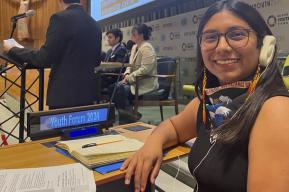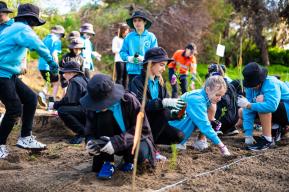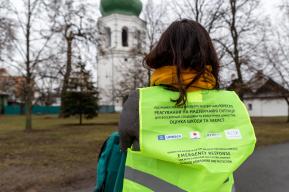News
Wadden Sea youth starts off global UNESCO environmental DNA campaign

Ocean species shed DNA into the water around them in the form of genetic material from waste, mucus or cells. Just one liter of water can determine the biodiversity richness in a given area and may contain hundreds of species.
Students collected eDNA samples at five locations across the Wadden Sea World Heritage area, including Esbjerg (Denmark), Nordstrand, Neuwerk and Wilhelmshaven (Germany), and Texel (Netherlands). The citizen-science sampling initiative was coordinated in collaboration with the Danish Wadden Sea National Park, the German Wadden Sea National Park Authorities Schleswig-Holstein, Hamburg and Lower Saxony and the Dutch Waddenvereniging.
The Wadden Sea is the first of 25 UNESCO World Heritage marine sites where eDNA sampling campaigns are being rolled out between September 2022 and April 2023.
This is an innovative approach that we are honoured to be part of”, says Bernard Baerends, Executive Secretary of the Common Wadden Sea Secretariat. “As one Wadden Sea, we work together to support the eDNA expeditions initiative, and thereby the global network, sharing a snapshot of marine life in our World Heritage site. The citizen science approach is an ideal opportunity to inspire and educate the next generation of ocean scientists.
Environmental DNA is an innovative science method that can be used in monitoring and evaluating ocean biodiversity without the need to actually extract organisms from their environment. The scientific results are expected to provide a one-off biodiversity snapshot across marine World Heritage sites, and for fish species particularly. Combined with IPCC heat scenario projections, the initiative will help inform potential geographic and distribution shifts of fish species as a result of climate change.
The initiative is a joint collaboration between UNESCO’s Intergovernmental Oceanographic Commission and the World Heritage Centre, and is made possible through the support of the Government of Flanders (Belgium). The results are expected end 2023 and will be publicly available on the world’s largest open source Ocean Biodiversity Information System (OBIS). The initiative marks the first global action for marine World Heritage under the United Nations Decade of Ocean Science for Sustainable Development (2021-2030).
More information about what is eDNA, and the project in general, is available here.
About the Wadden Sea
The Wadden Sea World Heritage area is the largest unbroken system of intertidal sand and mud flats in the world. The area is home to numerous plant and animal species, including marine mammals such as the harbour seal, grey seal and harbour porpoise. It is considered one of the most important areas for migratory birds in the world. Up to 6.1 million birds can be present at the same time in the Wadden Sea and an average of 10-12 million pass through it each year. Biodiversity on a worldwide scale is reliant on the Wadden Sea. It was inscribed on the UNESCO World Heritage List in 2009.






